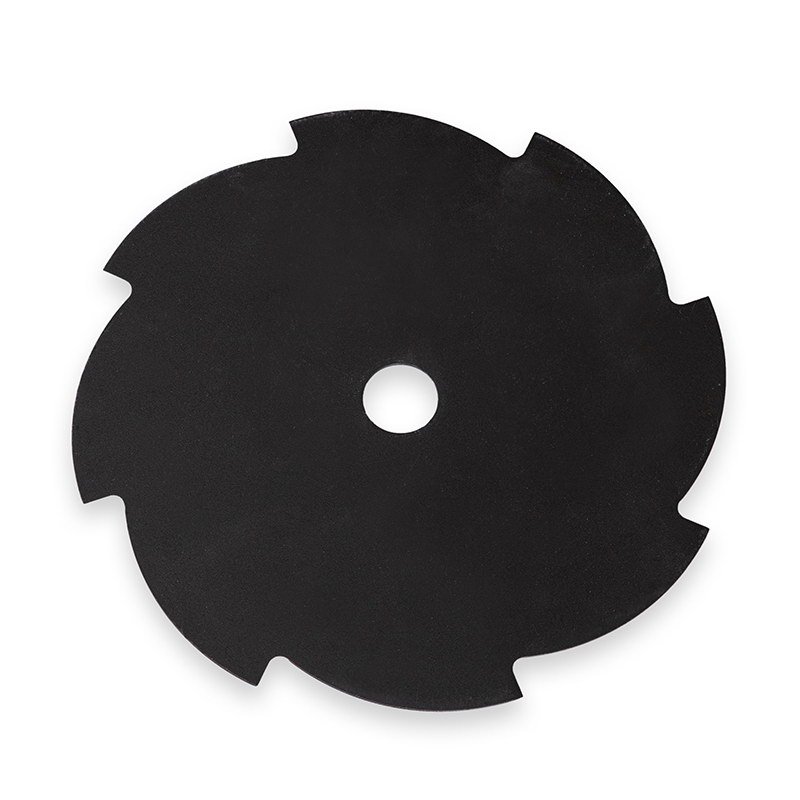Mower Blades
Source Directly from Expericed China Factory
Are you in search of lawn mower blades that promise precision and durability? Look no further than Radarblades Company. We are committed to being your go-to source for an extensive range of lawn mower blades, catering to a diverse array of mowing needs and ensuring superior quality in lawn care.
Our proficiency in blade manufacturing distinguishes us in the market. Radarblades Company excels in offering custom-designed blades, available in various types such as Standard, Low-Lift, High-Lift, Mulching, and Gator Blades. Each blade is precision-engineered to cater to your unique lawn conditions and mowing preferences. Trust in Radarblades Company to deliver blades that transform your lawn mowing experience, combining functionality with reliability.
Modern image box
Creating Solutions Tailored to Your Needs

Mulching blades

High lift blades

Gator blades

Standard lift Blades
Customized Mower blades for Your Unique Brand and application!

Needs Assessment:
A brief yet comprehensive discussion to understand your lawn’s specific requirements.
Blade Type Selection:
Expert guidance to choose the right blade type for your lawn, such as Standard, Low-Lift, or Mulching Blades.
Dimension Customization:
Tailoring the blade size to fit your mower perfectly for optimal performance.
Special Features:
Adding unique characteristics like enhanced cutting angles or reinforced edges based on your needs.
Quality Testing:
Rigorous testing to ensure each blade meets our high standards for sharpness and durability.
Delivery and Support: Providing easy-to-follow installation instructions and ongoing support for maintenance and queries.
Radarblades more than a manufacturer
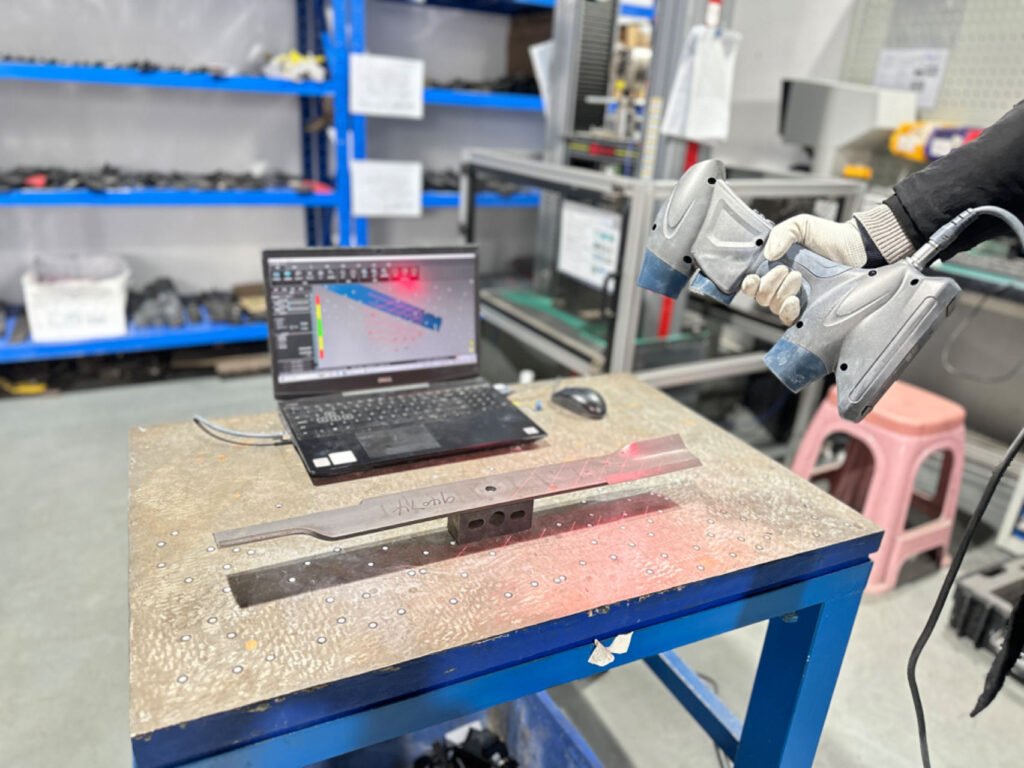
Design Ablity
We have dedicated ourselves to enhancing our capabilities from ID conceptual design to mold manufacturing and product development. We utilize the most advanced CAD, CAM, and CAE systems for mold design and manufacturing as well as for product development.
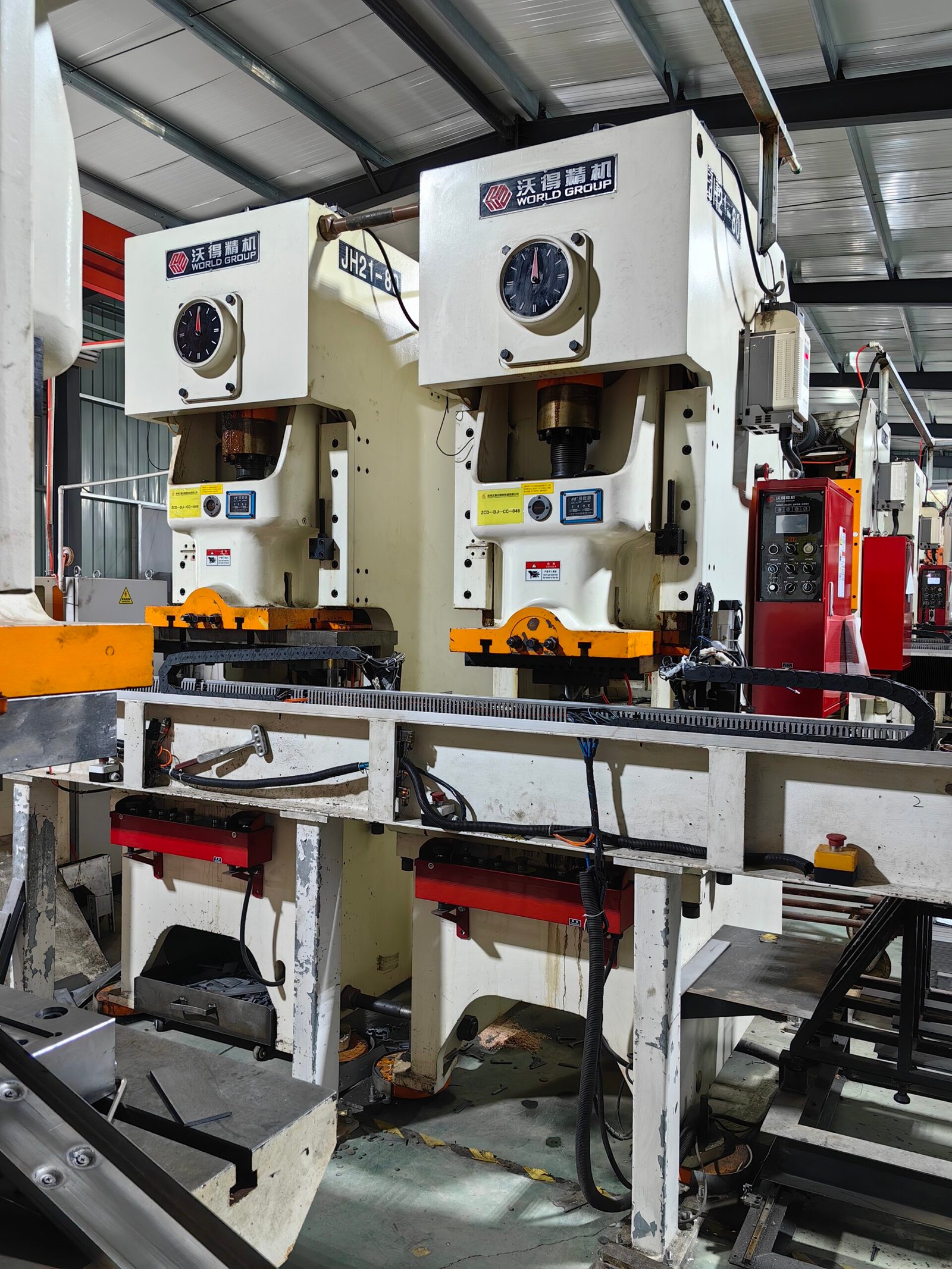
Advanced Line
The development of 3-in-1 molds has significantly reduced our product development cycle and lowered development costs. Through advanced technology, processes, and mold design, we ensure the high quality of our products.
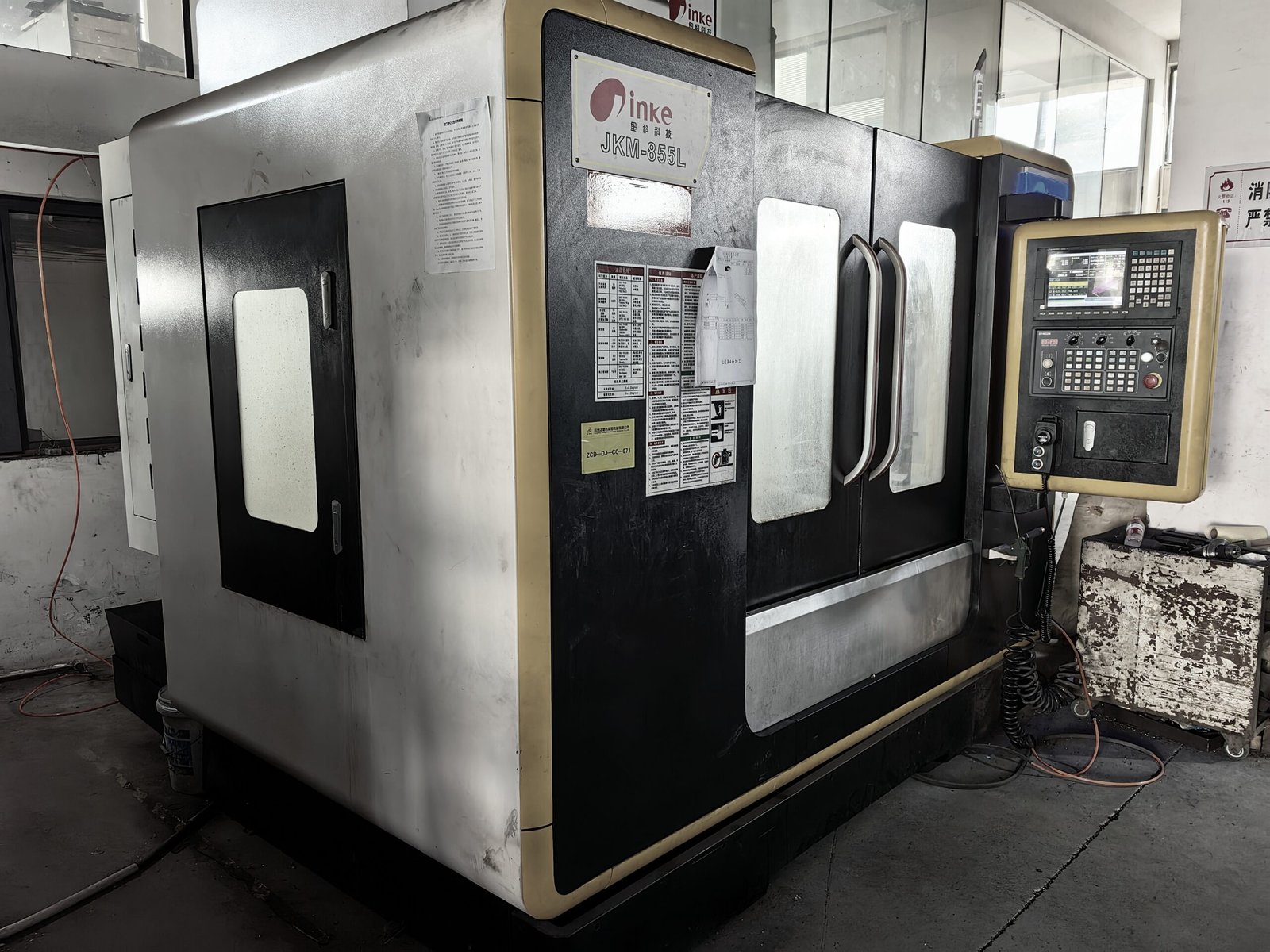
Die manufacturing technology
Die manufacturing technology encompasses the precision crafting of molds using advanced machinery, Speed up die by 10 times .

Well Equipped Lab
Our lab is well-equipped with specialized machines for material, structural, and safety testing, ensuring comprehensive analysis and quality assurance in every phase of product development
Why choose Radar Blades?
– In-Depth Blade Technology Insight: At Radarblades, our profound understanding of blade technology sets us apart. Our expertise is not just a service; it’s a valuable resource for you.
– Wide Array of Blade Options: Our product range includes an extensive selection of specialized blades, ensuring that we have the perfect blade for every unique requirement.
– Customized for Your Projects: Each blade is tailored precisely to your specifications. We understand that the right fit is crucial for optimal performance.
– Choose Radarblade: Partner with us and elevate your operations with our superior blade technology. Your success is our mission, and we are fully equipped to make it a reality.
Radarblades is where technology meets craftsmanship to deliver excellence in blade solutions. Let’s achieve remarkable results together.
FAQs FOR CLIENT
Getting Started with Our Industrial & Manufacturing Company
Lorem ipsum dolor sit amet consectetur adipiscing elit eue mauris molestie orci eget condimentum sollicitudin felis eu orci convallis erat vel mattis enim urna.
RadorBlades provides a diverse range of mower blades, including standard lift blades, mulching blades, high-lift blades, and more. Our extensive selection caters to various cutting needs.
Yes, our blades cover 90% of market models. Whether you have a popular brand or a specific model, RadorBlades aims to provide a compatible and high-quality solution.
Absolutely! RadorBlades offers customization options. You can tailor the size, design, and other features to meet your specific requirements. Contact us for personalized solutions.
The lead time depends on the order size and customization requirements. Our team will provide you with an estimated delivery time once your order details are confirmed.
Yes, we ship our products globally. Our logistics team ensures efficient and secure shipping to destinations worldwide. Shipping costs and delivery times may vary based on your location.
Quality is our priority. RadorBlades implements stringent quality control measures at every stage of the production process. Our blades undergo thorough inspection to meet the highest industry standards
Our Comprehensive Guide to Purchasing Mower Blades
What are lawnmower blades made of?
Boron Steel: This type of steel, which includes small amounts of boron, is harder and more durable than carbon steel. It’s often used in higher-end or professional-grade mower blades.
Boron steel is a high-grade steel alloy that contains a small amount of boron, typically less than 1%. This addition of boron to the steel significantly enhances its hardness and strength, making it an ideal material for applications where durability and wear resistance are essential. Here are some key points about boron steel used in mower blades
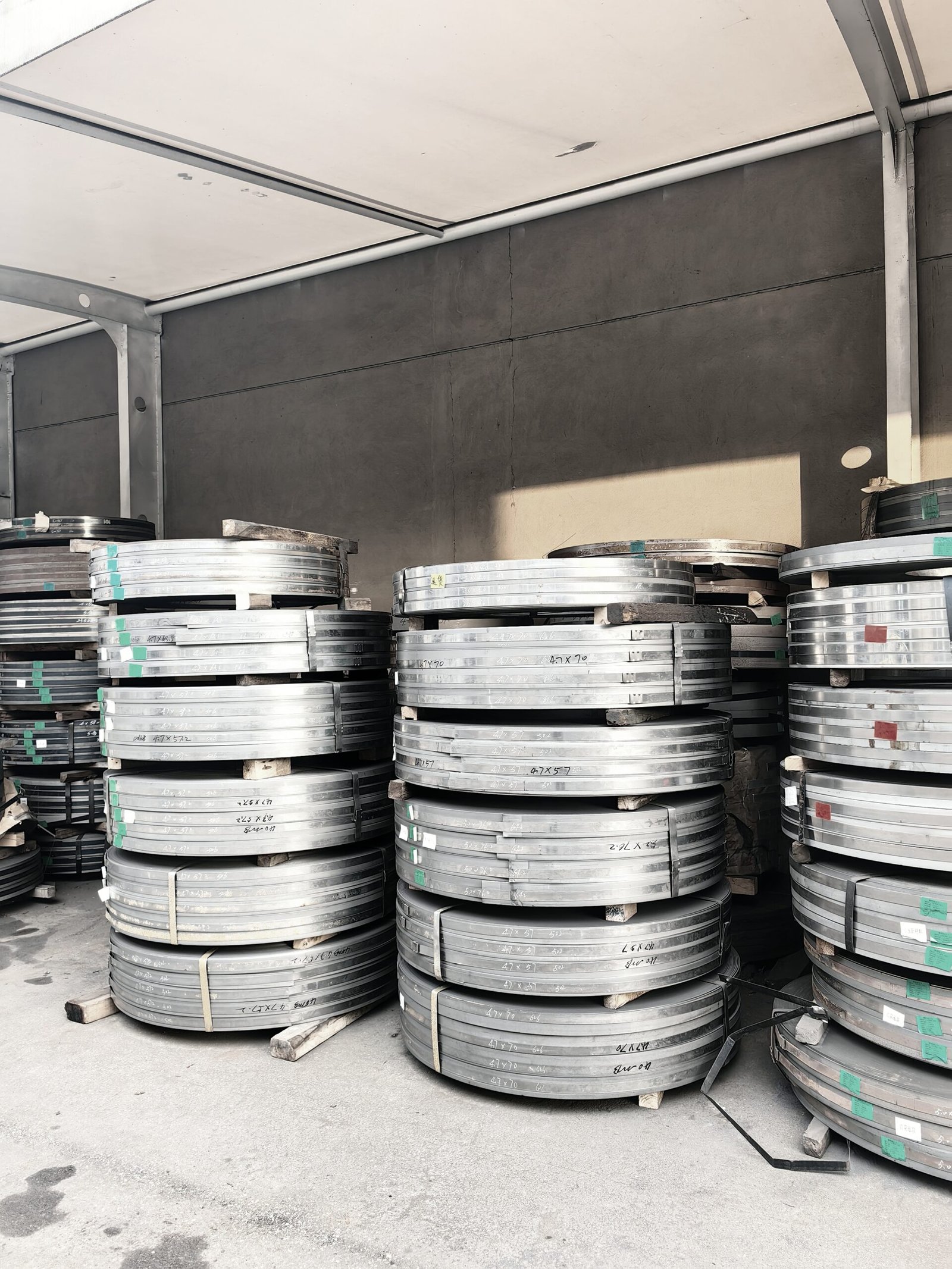
Advantages of boron steel
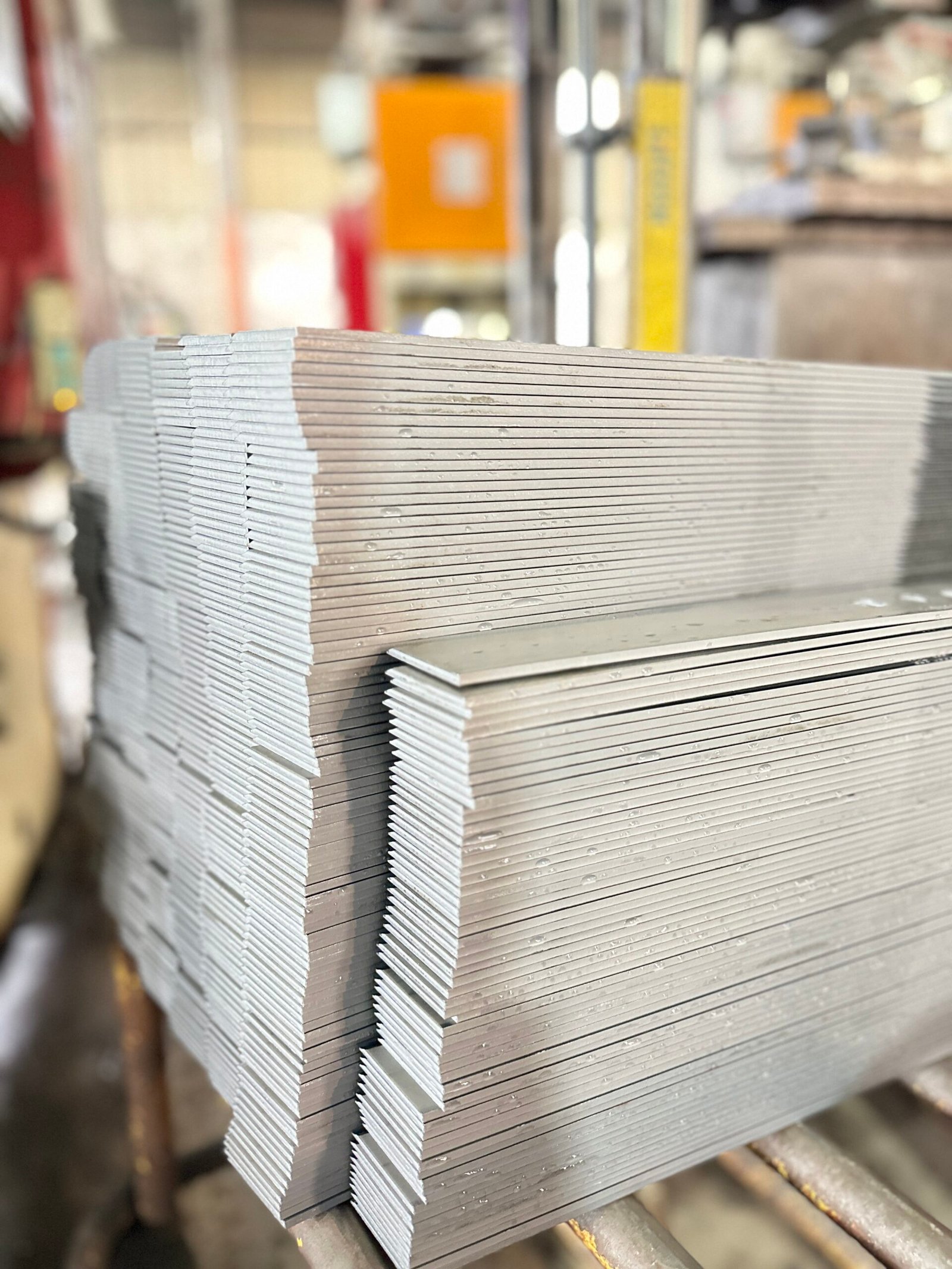
Boron steel is highly valued for its exceptional hardness and strength, primarily due to the addition of boron. This makes it an ideal material for lawn mower blades, offering several key advantages:
- Durability: Its increased hardness ensures mower blades are more resistant to wear and tear, leading to a longer lifespan and reduced need for frequent replacements.
- Impact Resistance: Despite its hardness, boron steel maintains good resistance to impacts, crucial for mower blades encountering obstacles like rocks.
- Corrosion Resistance: Better rust and corrosion resistance than many other steel types, making it suitable for outdoor and varying weather conditions.
- Cost-Effectiveness: Although initially more expensive, the extended lifespan of boron steel blades can offer long-term savings due to fewer replacements and maintenance needs.
- Suitable for Heavy-Duty Use: The material’s strength makes it ideal for commercial and heavy-duty landscaping applications.
In essence, boron steel blades are a robust and efficient choice for lawn mowers, balancing strength, durability, and cost-effectiveness, especially in demanding mowing conditions.
How do we choose mower blades?
Navigating the maze of finding the perfect mower blade can indeed be a bit of a puzzle, especially when shopping online. The challenge? Each blade appears identical in photos, making it tough to discern the right match for your needs. This is where Radar Blades steps in, simplifying your blade selection process. Ready to find your new blade, or perhaps a set of three? Let’s dive in:
Start with the Original Equipment Manufacturer (OEM) Number: This is your golden ticket. The OEM number is a unique identifier given to the blade by its manufacturer. Just input this number along with the manufacturer’s name into a search engine or an online store, and you’re likely to find exactly what you need. Missing the OEM number? Don’t fret – it’s typically listed in your mower’s manual. or talk to us now .
Model Name/Number – Your Next Go-To: If the OEM number is out of reach, or you don’t have the manual handy, most modern mower manuals can be easily found on the manufacturer’s website. Just look up the mower brand and model number to retrieve the necessary details.
When You Only Have Blade Characteristics:
- Measuring Blade Length: Measure the blade diagonally from one tip to the opposite. Remember, a blade too long won’t fit the deck, and one too short won’t cut all the grass. Precision in length is key.
- Identifying the Center Hole: This is crucial as it’s how the blade connects to the spindle assembly. Common types include various circle sizes, rounded rectangles, H-patterns, Y-patterns, and star patterns with 5, 6, or 7 points. Matching the exact blade length with the correct center-hole pattern or size will guide you to the right blade.
With Radar Blades, the guesswork in identifying the perfect lawn mower blade is significantly reduced. Whether you’re armed with an OEM number, model specifics, or just the blade characteristics, you’re well on your way to finding the ideal replacement blade.
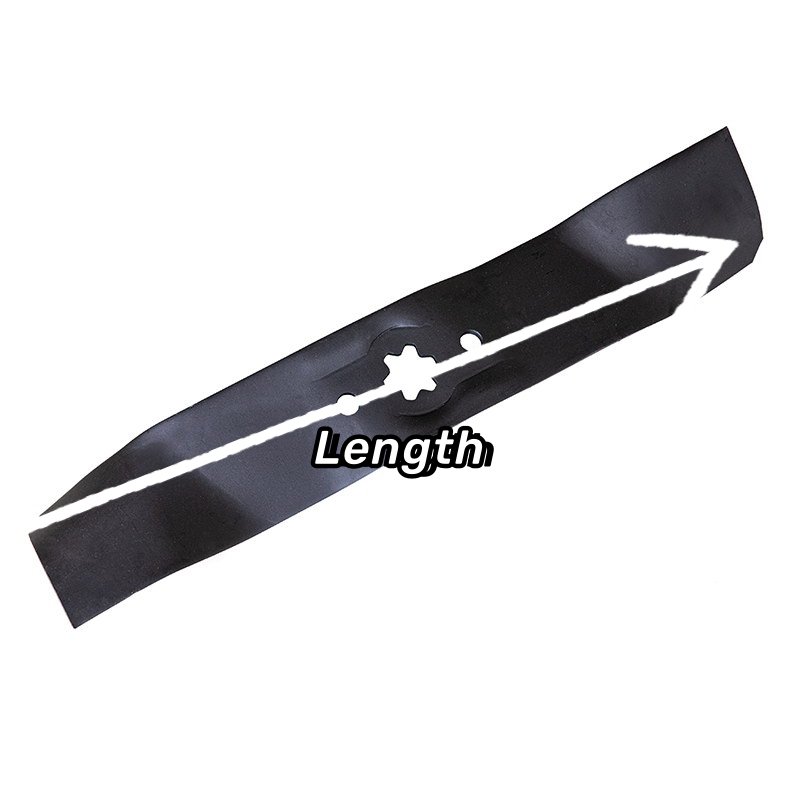
Different types of Mower blades
Lawn mower blades come in various types, each designed for specific mowing needs and conditions. Here’s an overview of different kinds of mower blades and their key differences:
Standard or Medium-Lift Blade:
- Design: Generally straight with a slight curve at each end.
- Function: Creates minimal suction, lifting the grass slightly for a precise cut. Best for discharge mowing where grass is expelled sideways.
- Best For: Yards with medium to thick grass.
- Limitation: May struggle with smaller clumps of grass, potentially leaving an uneven lawn.
Low-Lift Blade:
- Design: Less curved edges compared to standard blades.
- Function: Produces low suction, keeping grass low for trimming and discharging sideways. Minimizes dust dispersion.
- Best For: Mowing on sandy or dusty soils.
- Limitation: Not suitable for lifting grass into a bagger.
High-Lift Blade:
- Design: Distinct vertical angles on the edges for maximum airflow.
- Function: Creates strong suction for upright grass trimming and efficient bagging.
- Best For: Tall grass and bagging clippings.
- Limitation: Not suitable for sandy terrains; can drain more engine power.
Mulching Blade:
- Design: Curvier and more cutting edges than other blades.
- Function: Cuts grass into finer pieces and discharges them back to the ground for mulching.
- Best For: Recycling grass clippings as fertilizer.
- Limitation: Less effective with tall, dense grass; can lead to deck clogging.
Gator Blades:
- Design: Similar to mulching blades but with a specific angle on the teeth.
- Function: Efficiently cuts and re-cuts grass into fine pieces for even distribution and mulching.
- Best For: Fertilizing soil with finely cut grass.
- Limitation: Cutting edges may dull faster due to the fine cutting action.
Key Differences:
- Suction Power: Different blades create varying levels of suction, affecting how grass is lifted and cut.
- Cutting Action: Some blades are designed for finer cutting (like mulching and gator blades), while others for straightforward cutting and discharging.
- Suitability for Terrain: Certain blades are better for sandy soils, thick grass, or regular lawns.
- Mulching Capability: Mulching and gator blades specifically cut grass into finer pieces for natural fertilization.
- Maintenance and Longevity: Blades differ in how often they need to be sharpened and their overall durability.
Choosing the right blade depends on the specific needs of your lawn, including grass type, desired finish, and mower compatibility.
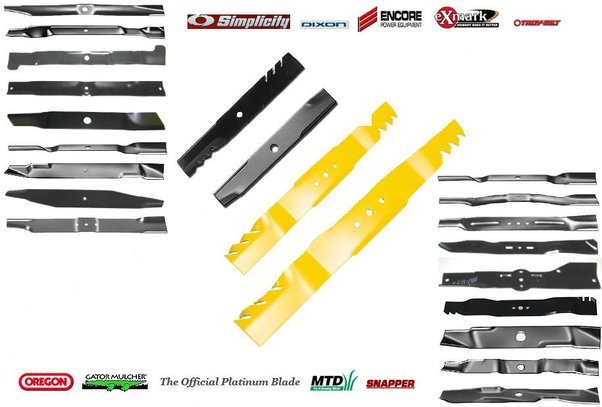
What is Mulching blades?

What Makes the Design of Mulching Blades Unique?
- How do the curved edges and multiple cutting surfaces of mulching blades differ from standard lawn mower blades?
How Do Mulching Blades Function Efficiently?
- What dual functions do mulching blades perform, and how is their special airflow design crucial for chopping grass clippings finely?
How Do Mulching Blades Enrich the Lawn?
- In what ways do the fine grass clippings from mulching blades decompose and return nutrients to the soil, thereby enriching the lawn?
Why Are Mulching Blades Eco-Friendly?
- How do mulching blades contribute to an environmentally sustainable lawn care practice by reducing yard waste and the need for chemical fertilizers?
What Are the Limitations of Mulching Blades?
- Why might mulching blades be less effective with tall or dense grass, and what issues can arise due to their lower suction power?
Who Should Ideally Use Mulching Blades?
- For whom are mulching blades most suitable, considering their benefits for lawn maintenance and environmental impact?
Get In Touch
Free sample .contact us Now !

